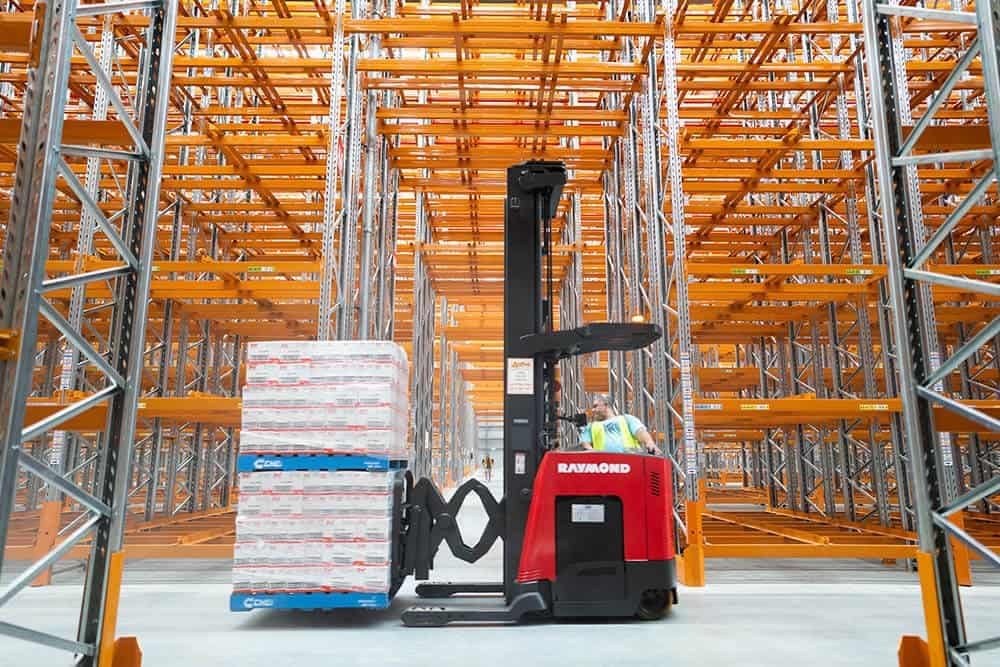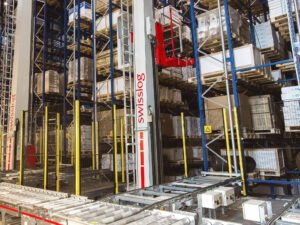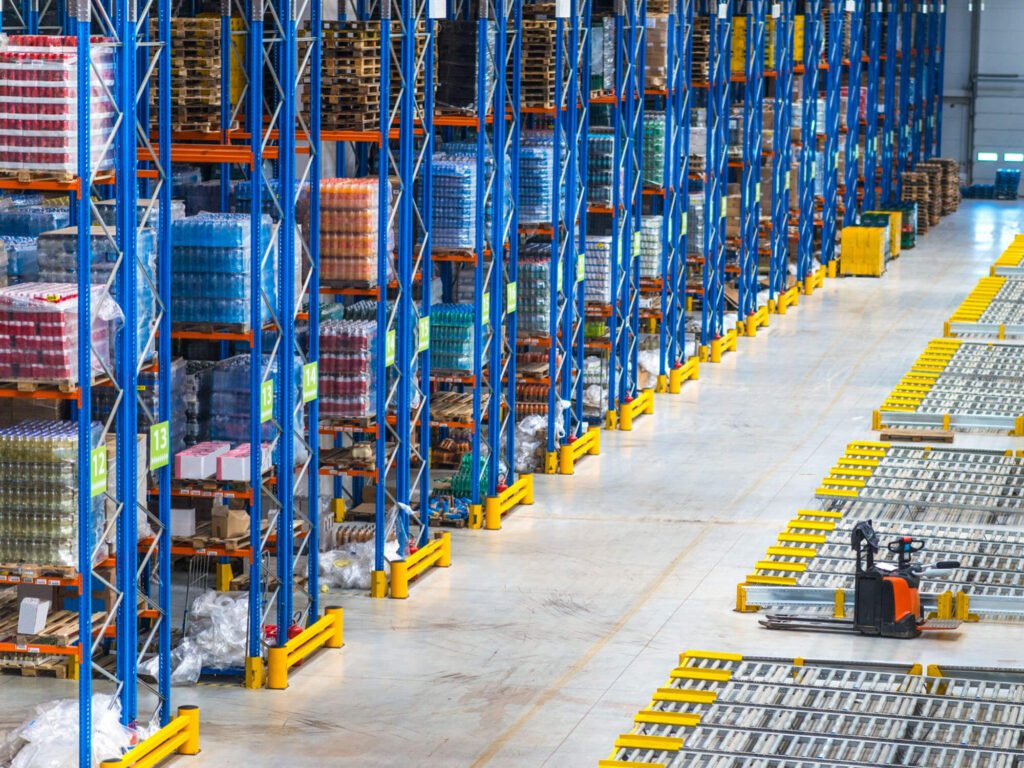In today’s hustle and bustle of the business world, keeping your products organized and moving smoothly is critical. That’s when industrial warehousing comes in to rescue the day! It’s like the ultimate storage superhero, providing firms with the tools and know-how to ensure that their supply chain runs like a well-oiled machine.
Let’s forget the dusty, outdated picture of traditional warehouses! In this comprehensive guide, you’ll venture into the high-tech world of industrial warehousing and how it’s changing the way organizations function. Buckle up as you’ll explore industrial warehouses’ coolest trends.
In addition, the article also provides you with insider tips and tactics to crank your company’s logistics and stock management into high gear with industrial warehousing. It’s like giving your business a jetpack!
What Exactly Is Industrial Warehousing?
Ever thought about where everything you purchase comes from? Like, before it ends up on store shelves or at your doorstep? The answer is probably the industrial warehouses. These huge facilities serve as the supply chain’s invisible magicians, offering the whole package of space, equipment, and knowledge to keep your stock organized and running well.
But, hey, industrial warehouses are much more than simply massive storage facilities. They’re like buzzing beehives where everything happens, including production, product assembly, packing, and delivery to retailers or your front door. They’re at the center of the whole process of delivering things from the producer to you!
So, why should you worry about all of this warehouse stuff? For firms, it’s all about being very efficient. They aim to ensure that they have exactly the correct quantity of inventory in stock, keep expenses down, and deliver those items to you as soon as possible. It indicates that you can have what you want when you want it. Pretty awesome, right?
Industrial storage is essential for every organization, whether it is a tiny local operation or a multinational corporation selling products all over the globe. It enables firms to expand, adapt to whatever the market throws at them, and eventually generate more money. So, while you consider all of the items you purchase, remember the incredible effort that goes on behind the scenes in those huge warehouses to deliver them to you.
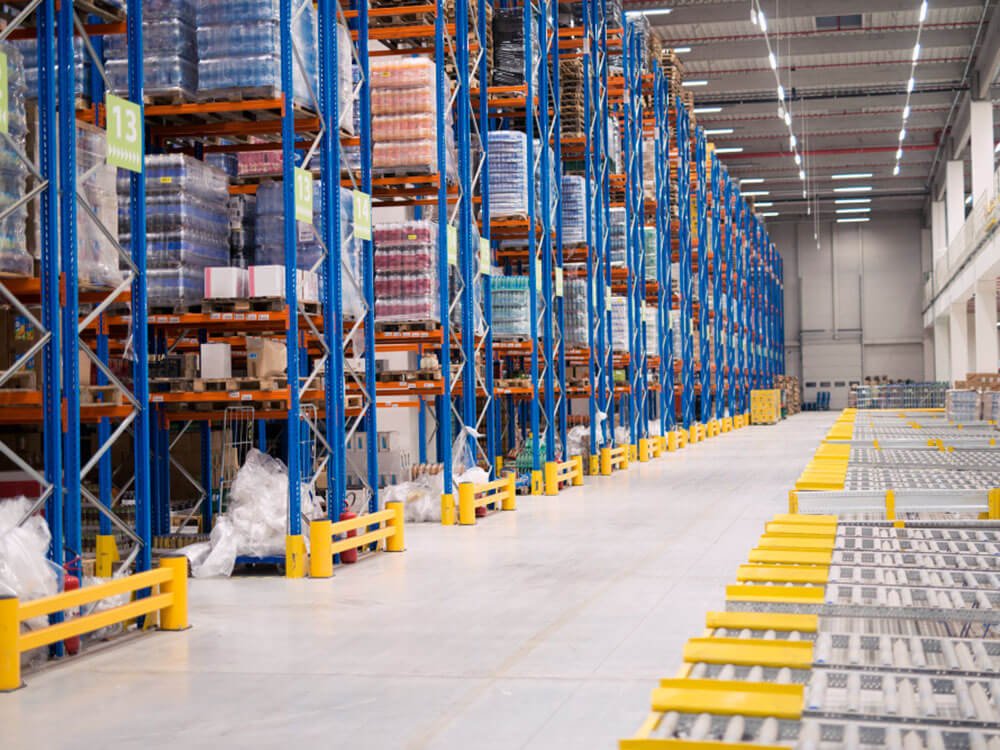
Understanding How Industrial Warehouses Work
How, however, can this warehouse magic occur? Everything begins when a sizable cargo of goods shows up. Picture a truckload of cartons and boxes rolling in! To ensure everything is precisely what was requested and that nothing is broken or damaged, warehouse staff meticulously inspect everything.
Once confirmed, the stored goods are assigned to certain places inside the warehouse and given little name tags, or labels—for example, industrial pallet racks. Think of it as a massive Tetris game where each piece fits perfectly. When it comes to shipping the products out later, this makes locating them very easy. Sometimes, advanced computer systems are employed to assist with location tracking.
Then comes preparing those customer orders! Workers choose the proper items, safely pack them, and prepare them for shipping. Robots can help with this in certain industrial warehouses, which is very amazing! And they combine orders to save money on shipping if they’re all headed to the same location. Reasonably intelligent, yes?
Ultimately, the boxed orders are placed into trucks or other means of transportation and driven happily to retailers or your home. It resembles the warehouse show’s big finale, when everything comes together flawlessly!
Essential Traits Of Industrial Warehousing
Ever wondered why industrial warehouses are the cool kid in the supply chain? They house all of the behind-the-scenes wizardry and are more than simply enormous storage lockers! Let’s delve right into the reasons that make these warehouses so fantastic.
They are, to start with, the best multitaskers. Consider them as the indispensable instruments that can do anything from manufacturing to packing and shipping. What gives them such value to a variety of companies is their chameleon-like skill set.
Another cool thing is that they’re often built like giant Erector sets. Because they employ prefabricated components, building goes very quickly and is less expensive than starting from scratch. Think of it as a warehouse that pops up in a jiffy!
Industrial warehouse’s location is also important. Well, roads, seaports, and airports are often best buddies of these facilities. That way, it’s simple to send those goods flying in and out, almost like having a warehouse with its own VIP lane.
Just as essential, these warehouses emphasize financial acumen. Companies can save transportation expenses and monitor their inventory closely by keeping a ton of items in one central area. It’s a win-win for businesses and a big reason why industrial warehousing is such a big deal these days.
The best thing about each industrial warehouse is that it’s made especially for the industry it services. It’s like receiving a tailor-made garment that fits anything odd or amazing you need to keep, exactly. Pretty nifty, right?
Industrial Warehousing’s Benefits
- Enhancing inventory management via real-time visibility and precise tracking.
- Increasing storage capacity by fully utilizing available space in a warehouse.
- Augmenting efficiency by streamlining processes and saving labor efforts.
Industrial Warehousing’s Challenge
- Requiring high upfront investments due to the use of automation technologies.

What Are The Different Kinds Of Industrial Warehouses?
These industrial giants are divided into many categories according to what they do and store, hence there’s no universal solution. It is like organizing your clothes into different drawers – everything has its place! Let’s explore the two primary classification schemes for these warehouses.
By Product Type
When segmenting industrial warehouses by product type, there are three popular variants, as follows:
- Finished goods warehouses: These facilities are the last stops before stored items reach customers. They hold finished products that are ready for distribution and sale, guaranteeing that client orders are fulfilled on schedule and that inventory levels remain ideal.
- Semi-finished goods warehouses: As the name implies, these hubs contain partly processed commodities or components that have yet to be turned into completed products. They serve as a buffer between manufacturing phases, allowing for more flexibility and efficiency in production scheduling.
- Raw materials warehouses: This third industrial warehouse type is the primary storage location for raw materials. These buildings store everything from metals and polymers to chemicals and agricultural supplies, maintaining a consistent supply for manufacturing lines.
By Characteristics
In addition to the above classification, people also divide industrial warehousing based on its characteristics. The following are the three types you’ll often encounter:
- Indoor industrial warehouses: These enclosed facilities are often owned and maintained by the firms themselves, thereby providing more control to fulfill particular storage and manufacturing requirements. Companies can modernize them with cutting-edge technology to increase efficiency.
- Outdoor industrial warehouses: In contrast, these open-air buildings are commonly run by third-party logistics providers (3PLs) and serve many enterprises at once. They’re usually outfitted with strong security measures and innovative management systems to protect the safety of stored items.
- Industrial depots: To store large-scale industrial equipment, machinery, and vehicles, companies will rely on huge buildings called industrial depots. They often act as major centers for the maintenance, repair, and distribution of these important assets.
Why Is Industrial Warehousing Different?
Do you think all warehouses are large, empty boxes? Nope! Industrial warehouses are in a very different league. Unlike the basic warehouses you may imagine, industrial warehouses are where everything occurs, from product manufacturing to packaging and shipping.
So, guess what? Industrial warehouse workers are not afraid to get their hands dirty! The facilities are intended to handle anything from raw materials (such as wood, metal, or even chemicals) to partially manufactured items to the finished, shiny new objects you buy.
Industrial warehouses are also tech-savvy, with intelligent solutions like robots and computer programs to handle everything, including managing inventory and determining the best way to pack and transport your items.
Best Practices To Better Utilize Industrial Warehouses
Optimizing industrial warehousing operations is more than just storing items; it also includes applying best practices that improve efficiency, productivity, and safety while lowering costs and environmental impact. Here’s a look at some of the main tactics that successful warehouses use:
- Optimizing space: Intelligent space planning helps firms achieve the right balance between storage space and rapid access to the items. You should make sure everything is easily accessible so that workers don’t have to spend their time running about.
- Training your crew: This includes training them how to operate all of the sophisticated equipment, be safe on the job, and even handle inventory like a pro!
- Ensuring quality: Industrial warehouses often have a whole crew devoted to quality control! They thoroughly check everything, perform tests, and keep a close watch on any defects or issues. It’s like having a quality assurance superhero that ensures your favorite foods are always flawless!
- Monitoring stock in real time: Keeping an eye on your inventory is essential, right? Warehouses utilize high-tech equipment to monitor everything in real time. This way, they always know how much inventory they have, where it is, and when it needs to be refilled.
- Maintaining machinery: By taking care of their equipment, firms can avoid expensive malfunctions and facilitate seamless warehouse operations. That’s why regular maintenance is essential, whether it’s inspecting for wear and tear, cleaning up, or addressing any concerns.
- Facilitating sustainability: By using energy-efficient lighting, eco-friendly packaging, and recycling programs, industrial warehouses can actively reduce their environmental effect and help the world become greener.
The Most Fascinating Trends Of Industrial Warehousing In 2024
Industrial warehouses are getting a serious makeover, with amazing trends revolutionizing the way that companies store, handle, and ship their products. Get ready to see which trends will rule industrial warehouses in 2024.
#1: Warehouse Automation
Automation is revolutionizing industrial warehousing by bringing sophisticated equipment and systems to undertake jobs formerly performed by humans. This comprises automatic conveyor belts, robotic arms, and AS/RS.

These technologies not only improve efficiency and speed but also enable high-density storage in smaller areas, thereby increasing warehouse space utilization. By automating repetitive and labor-intensive processes, industrial warehouses can free up their workers to concentrate on more complex and value-added tasks.
#2: Smart Management Systems
Smart management solutions are becoming more popular in industrial warehouses. They serve as the operation’s brains, using cutting-edge technologies like sensors and barcode scanners to monitor everything in real-time. This implies that warehouse managers will always know precisely what is in stock and where to get it, thus eliminating the need for continuous searching!
But that’s not all! These systems function similarly to fortune tellers, utilizing data and advanced algorithms to forecast what consumers will want, plan the shortest routes for picking and packaging orders, and even schedule maintenance before things break down.
#3: Workforce Optimization
Workforce optimization is all about ensuring warehouse employees work smarter, not harder. It’s like giving them the tools and training they need to become more productive! This includes providing specialized training programs and utilizing technologies to make their tasks simpler.
Special software systems such as WMS and LMS are like secret weapons for workforce optimization. They monitor how staff are performing, identify areas for improvement, and even develop individualized training courses.
#4: Material Handling
Moving items around a warehouse is no longer a hassle in 2024! Why, you may ask? Well, it’s because automated solutions like AGVs (basically self-driving carts), AMRs (like Roomba, but for warehouses), and robotic picking systems are gaining traction.
These fascinating robots can zip about the inventory facility, picking up and dumping down products with astonishing speed and precision. Not only does this increase efficiency, but it also protects workers from heavy lifting and other dangerous duties. It’s like having a whole squad of tiny helpers who never get tired!
#5: Predictive Analytics
Forget crystal balls, as you’ve got predictive analytics! With this technology, which uses data to forecast the future, your warehouse is comparable to having a superpower. It can stock items exactly right by knowing what consumers will desire before they even order.
And it can also predict in advance when a machine will malfunction, thereby saving expensive delays caused by downtime. Briefly speaking, predictive analytics can guide you toward wise choices and cost savings.
#6: Last-Mile Optimization
Ever ordered something online and wondered how it arrived at your door so fast? Last-mile optimization steps in at that point. Ensuring a seamless and effective final leg of the delivery trip is everything.
This entails arranging the optimum routes using sophisticated algorithms, monitoring delivery in real time, and sending drones to such remote locations. Warehouses can save some money themselves and satisfy customers by expediting and lowering delivery costs. Everyone wins here!
#7: Immersive Technologies
Consider virtual reality to be limited to gaming? Think again! Cool technologies like virtual reality and augmented reality are being used by industrial warehouses to improve workspace design and employee training.
Without ever getting up from your chair, picture donning a headset and exploring a virtual warehouse to learn how to select and pack orders! Augmented reality is doing that. And before they ever build it, virtual reality can assist warehouse managers in creating the most effective layout. It resembles a sneak peek into the future of warehousing!
#8: Sustainable Warehousing
Being eco-friendly is cool, and warehouses are joining the party as well! The main idea of sustainable storage is to lessen environmental impact. This includes, as far as feasible, recycling and waste reduction, as well as employing renewable energy sources like solar power.
Warehouses benefit from this not just for the environment but also from lower energy bills and improved reputation. It equates to simultaneously becoming a business and environmental warrior!
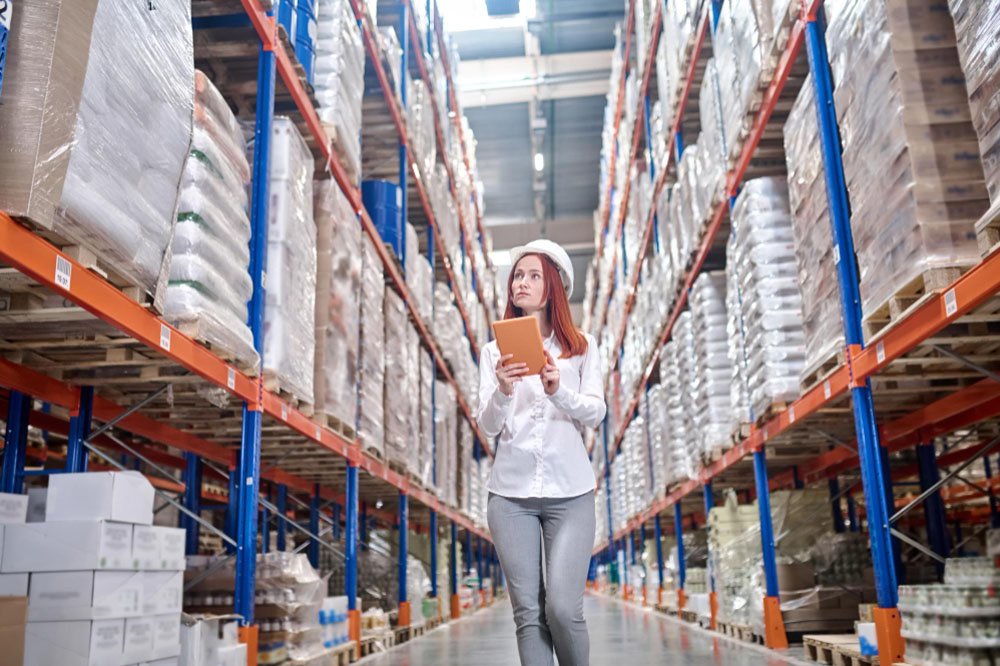
Crucial Factors When Picking An Industrial Warehousing Partner
Not every company can afford to build their own giant warehouse, right? Therefore, it’s wise to go with an industrial warehousing partner. But how do you pick the right one? Let’s break down the process with the following criteria:
- Location’s importance: Imagine your warehouse buddy lives right next to the highway, the airport, and the seaport. That means your inventory can zoom out the door and get to where it needs to go super fast! So, always choose a partner whose warehouse is in a convenience spot.
- Fancy facilities: Picture a warehouse stocked with innovative tools and machinery that can process a wide range of industrial materials. Your goods will have a blast at this place! If your potential business partner has a safe, clean warehouse that can withstand temperature extremes, it’s a huge plus.
- Experience matters: You wouldn’t want a babysitter without experience, and the same is true for an industrial warehousing partner. You can rest easy knowing that all your goods are in the capable hands of an experienced partner who has seen it all!
- Extra perks: Some warehouse buddies go above and beyond just storing your products. They can pack, label, and even ship your commodities directly to customers. That’s like having a personal assistant for your inventory! Thus, consider what extra services a potential partner offers to make your life easier.
- Flexibility is key: Your company evolves and develops with you. A good industrial warehousing partner can adapt to your changing needs, whether you want more space or different services. Find a partner who’s flexible and willing to work with you to resolve those storage demands.
- Show me the money: Having a warehouse mate will undoubtedly increase your expenses. Keep in mind that the most affordable option isn’t always the best when comparing pricing from multiple partners. You should look for a warehouse partner who offers good value for your money, providing quality service without breaking the bank!
Conclusion
There you have it! Industrial warehousing is more than simply keeping items; it’s the lifeblood of how organizations operate, from product development to delivery to your doorstep. It’s a game changer for businesses of all sizes, allowing them to simplify operations and save significant money.
The great thing is that industrial warehousing isn’t standing still! Technology is transforming these giants, making them smarter, greener, and more efficient than ever before. The future of industrial warehousing includes robots, drones, and cutting-edge software.
In the corporate world, information is power, and understanding industrial storage is no exception. The information in this guide can assist you in making sound decisions to improve your supply chain and eventually help your company grow. Thank you for joining this warehouse journey!

